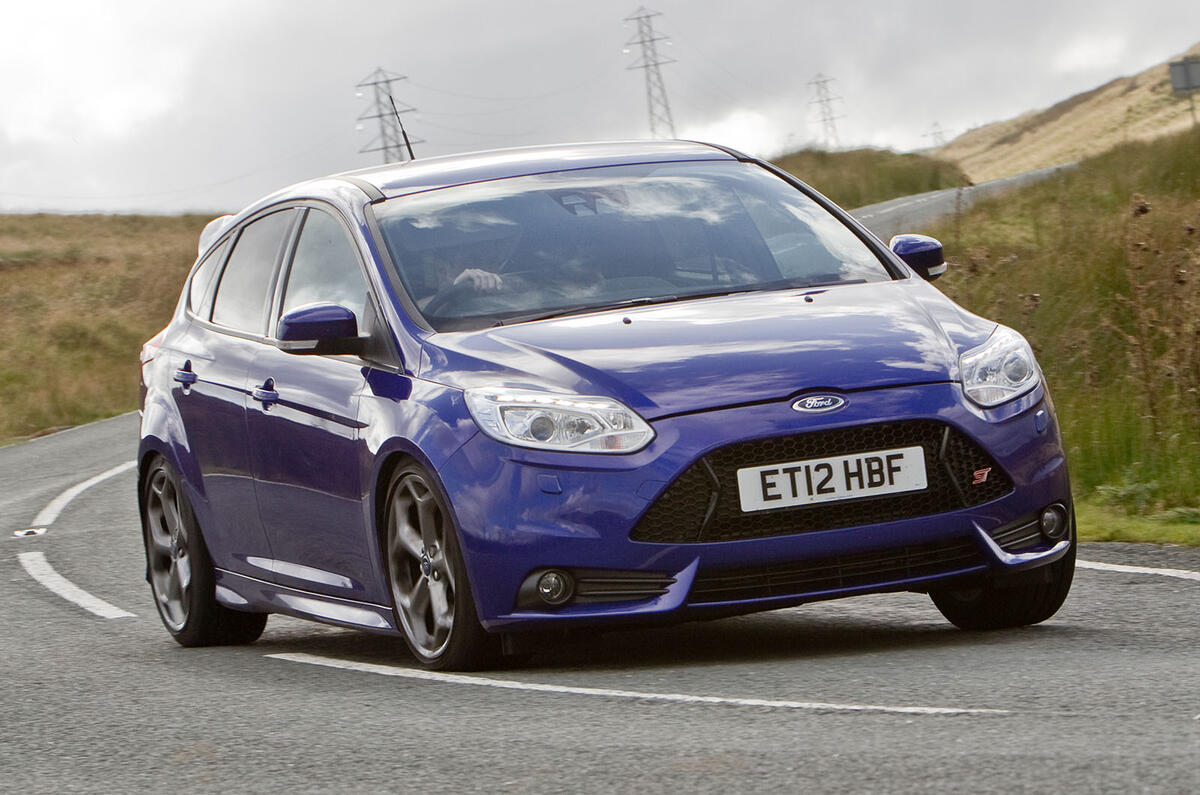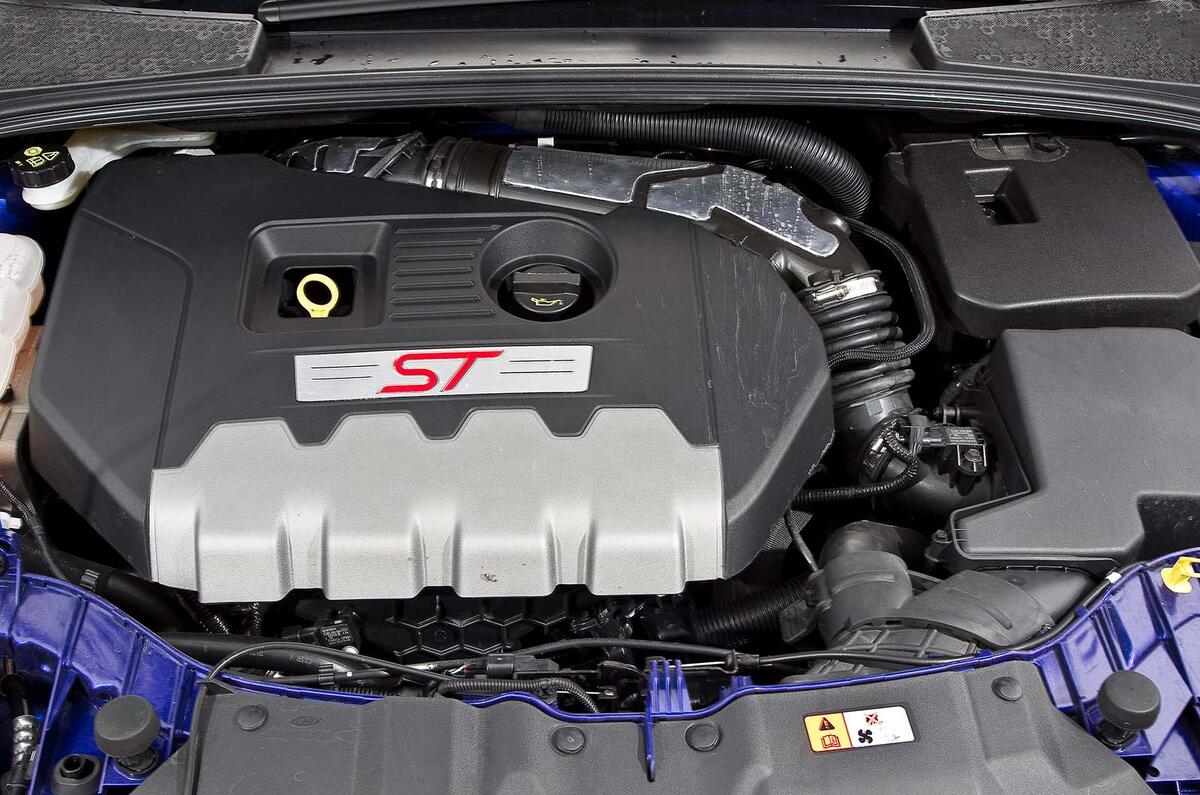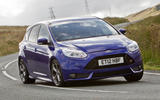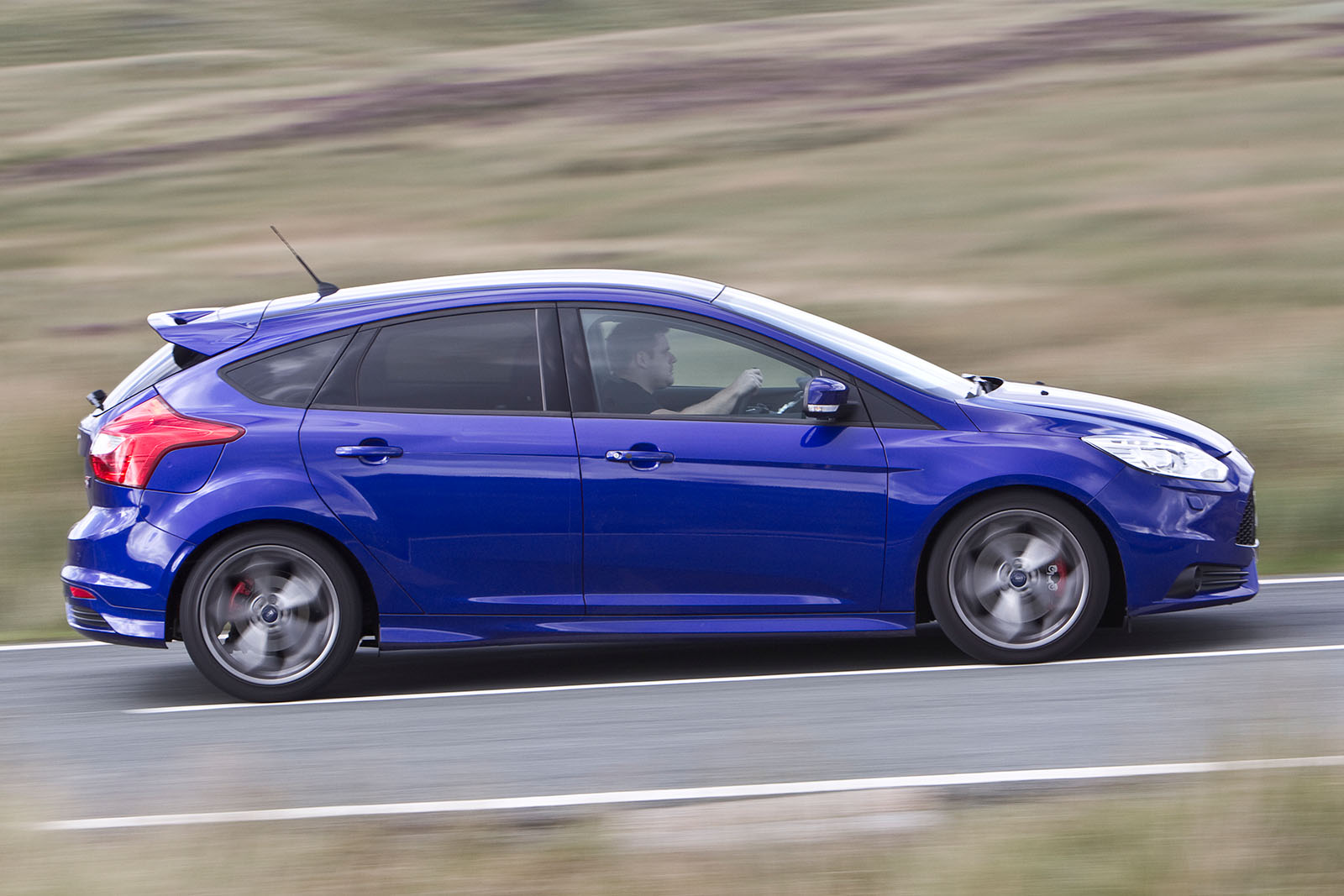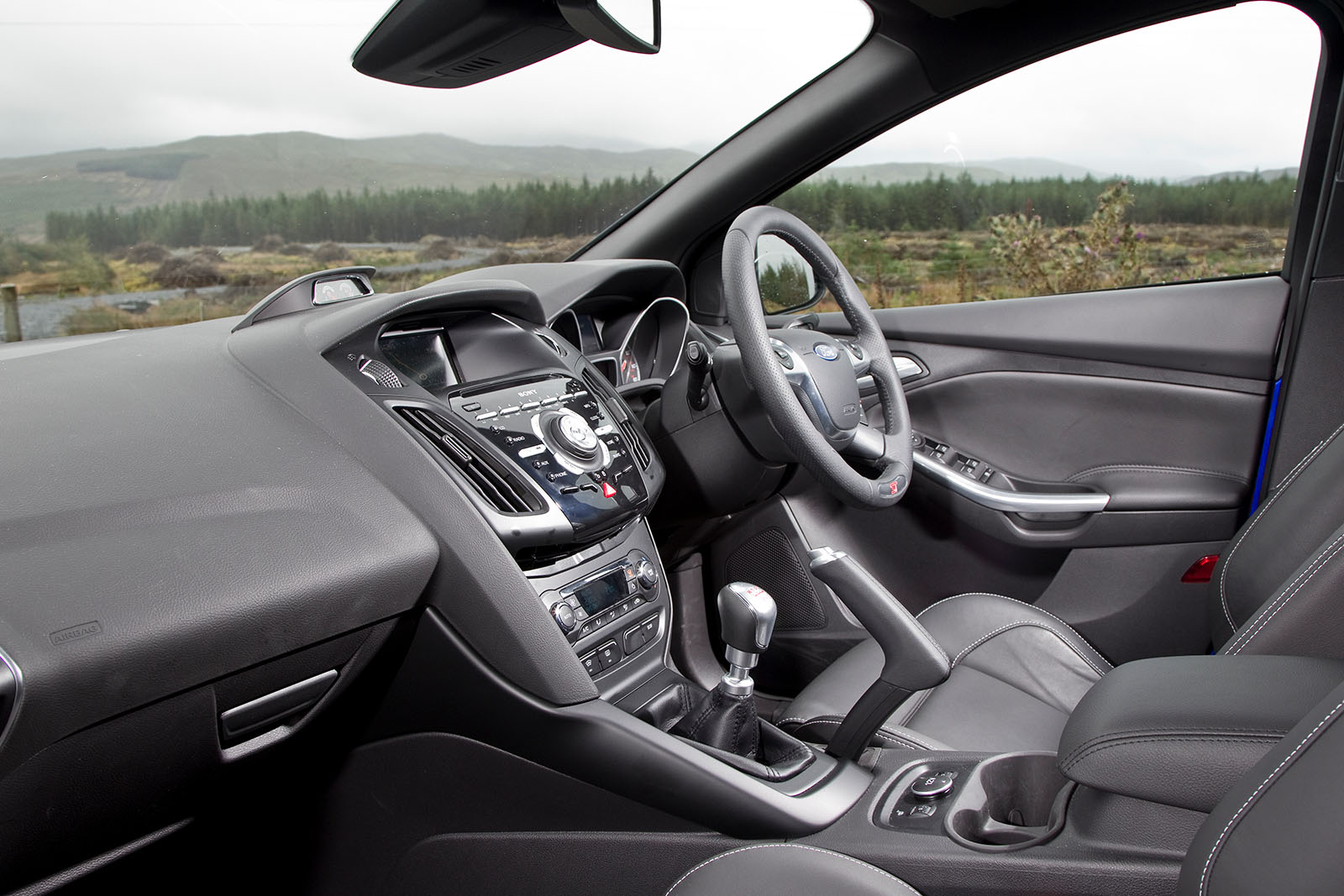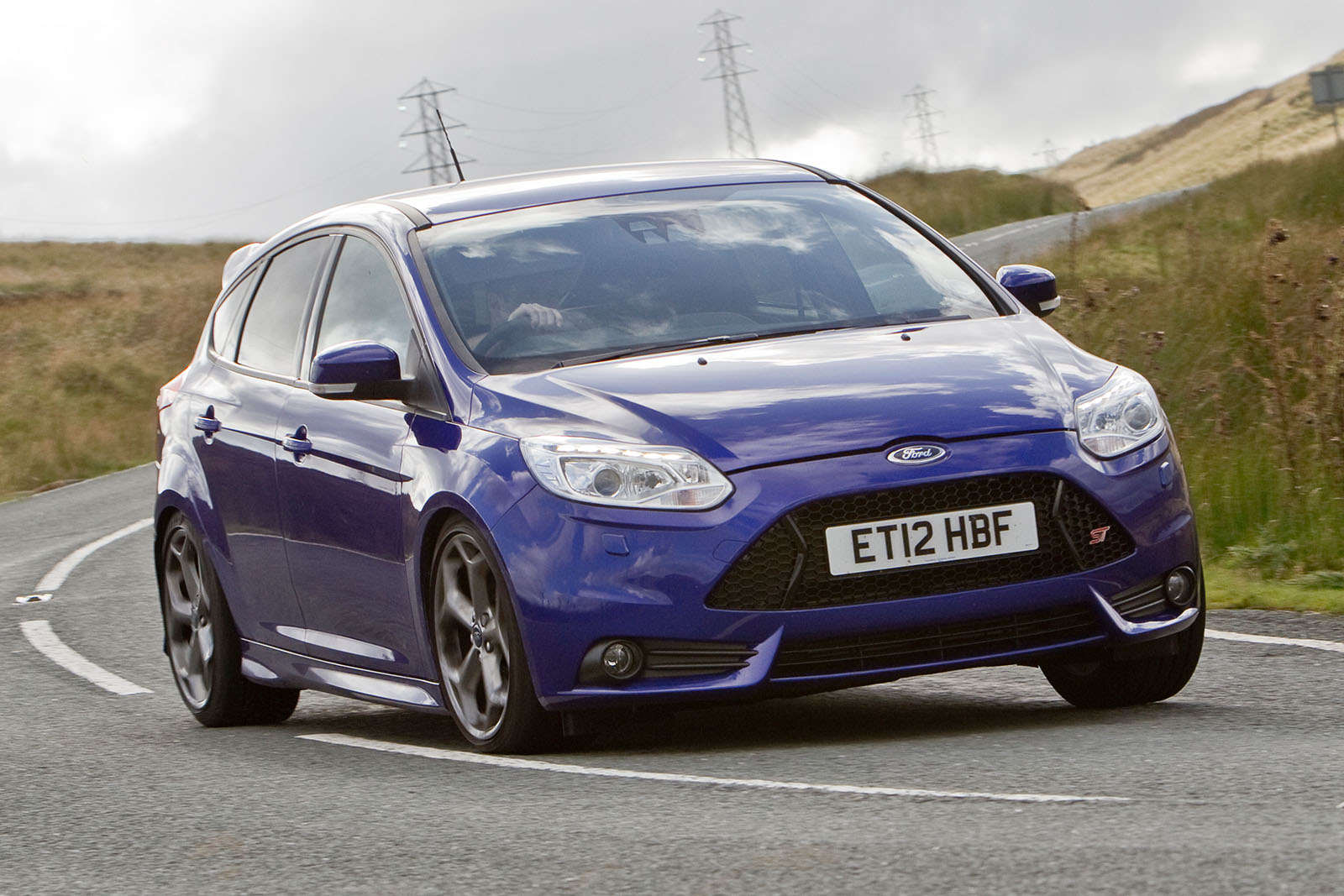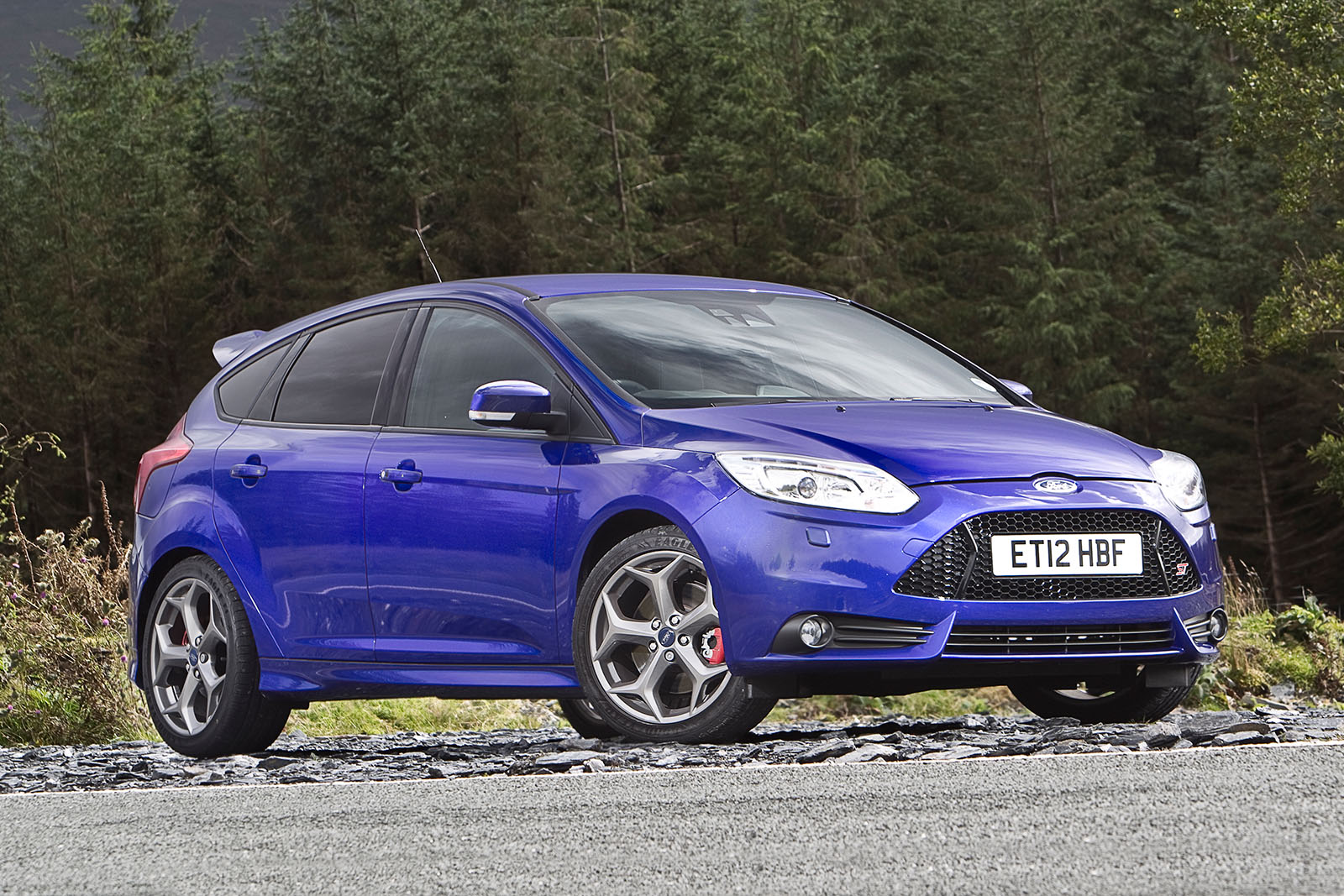At its launch in 2012, the Ford Focus 2.0T ST-3 was around £1000 cheaper than the Volkswagen Golf GTI manual that arrived the following year. Used examples now cost up to £2000 less than the Volkswagen.
Which one has the edge? The Focus, with 247bhp, or the Golf, with 217bhp? In the opinion of Autocar’s road testers, the Ford was a four-and-a-half-star car while the Volkswagen scored four stars, and the team praised the fast Ford’s poised, interactive handling and responsive and flexible engine.
It was offered in multiple guises: five-door hatch and estate, a choice of 2.0-litre Ecoboost turbo petrol or, from 2015, 182bhp 2.0-litre TDCi diesel engines, and in three trims, called ST-1, -2 and -3. Here, we’re zeroing in on the petrol hatch.
Before anyone got their hands on the new ST, there were unflattering comparisons made between its turbocharged 2.0-litre four-cylinder engine and the 2.5-litre five-cylinder unit that powered its Mk2 predecessor. But once behind the wheel, critics were soon won over.
Apart from its slight reluctance to begin spinning at low revs, the engine impressed our testers with its performance as well as its noise, which is piped into the cabin. It’s also more economical than the 2.5, in Autocar’s hands returning 40mpg on a touring run.
Indeed, low running costs were one of Ford’s goals with the Mk3 ST. Others were to design a hot hatch for weekdays and not just weekends and persuade buyers to accept one designed for world markets rather than just for Europe. We judged the firm had succeeded on both counts.



